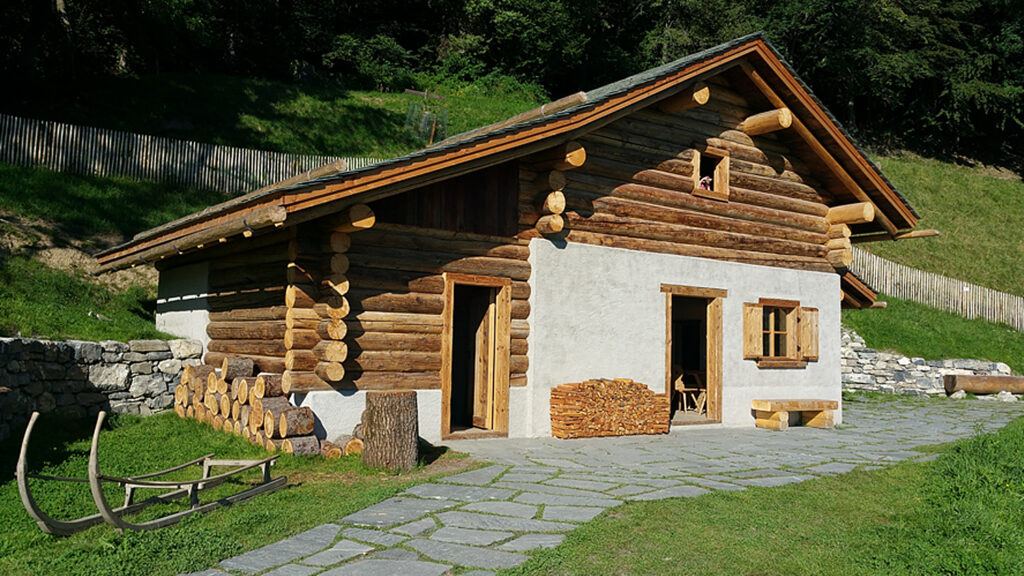Wed, Aug 24th 2022
Heidi is not only one of Switzerland’s most iconic stories, but one of the first novels in modern history to describe homesickness as a medical condition and suggest that the Swiss mountains possess the cure.

The story of little Swiss girl named Heidi has charmed the world over and drawn tourists to Switzerland since it was published in 1880 (credit Visit Graubunden).
The tale of Heidi – a homesick child determined to return to the Swiss mountains – has captivated audiences for generations. But underneath a simple plot about home lies Swiss folklore about the healing powers of nature and the perils of leaving Switzerland.
The story of Heidi
Heidi is an orphaned five-year-old whose aunt brings her to the mountains to live with her ornery grandfather. While there, Heidi befriends her neighbors, a goatherd named Peter and his grandmother. Heidi’s kind and positive nature eventually softens her grandfather’s tough demeanor.
Without warning, Heidi’s aunt returns and takes her to live in Frankfurt. She is placed with a wealthy couple, the Sesemanns, and asked to serve as a companion to their wheelchair-bound daughter, Klara. The two girls become close friends, but Heidi is desperately homesick for the mountains.
While in Frankfurt, Heidi becomes ill, growing increasingly pale and thin. On doctor’s orders, Heidi is returned to her mountain home, her grandfather and friends.
Klara later visits Heidi and the Swiss mountain air miraculously helps Klara regain the ability to walk. Klara’s father is overjoyed and promises to care for Heidi after her grandfather passes away.

The 1937 film version of Heidi starring Shirley Temple is one of the more famous of the 25 film and television adaptations of the book.
Homesickness – a Swiss invention?
In 1688, Swiss doctor Johanne Hofer observed concerning symptoms that primarily affected the Swiss, particularly Swiss mercenaries fighting in foreign countries. Hofer noted that symptoms included high fever, depression and irregular heartbeat. Some cases were so severe that the disease was fatal or drove the soldiers to desert their posts, he wrote.
Hofer identified this mysterious illness as ‘nostalgia’, which combines the Greek words ‘nostos’ – to return home and ‘algos’ – pain. He attributed the illness to psychological causes and believed this sickness was triggered by being forced to remain in a strange and foreign environment.
Our understanding of nostalgia has changed in the years since and we know now that it is not limited to the Swiss. However, the emotions that underpin nostalgia and homesickness are universally felt and this could be one of the reasons that the story of Heidi still resonates with so many.

Early editions of Heidi included woodcut illustrations.
Fact or fiction?
Although not a true story, the character of Heidi is said to be inspired by a girl named Maia Just who lived in a village near Maienfeld. The author, Johanna Spyri, had made several visits to the area and chose Maienfeld as the setting for her story. Long-time residents claimed that Maia’s happy, cheerful disposition had provided an archetype for the character of Heidi.
Spyri may have also drawn inspiration from her own personal experiences. Like Heidi, Spyri grew up in an idyllic Swiss village with forests, meadows and a view of the Alps. Both Heidi and Spyri had a love of nature and felt homesick after moving to big cities.

Maienfeld has recreated Heidi’s home for visitors in ‘Heididorf.’
Johanna Spyri – a legend in her own right
Spyri was a seemingly ordinary mother and housewife who achieved extraordinary success as a writer in her lifetime. Middle and upper class women of her day were expected to look after their homes and families instead of pursuing a profession.
Her career as a writer began in her 40s with A Leaf on Vrony’s Grave, published anonymously in 1871. This story was not for children. In fact, it was considered ahead of its time in its discussion of social issues and domestic violence.
After the success of Heidi in 1880, tragedy struck when Spyri lost both her husband and only child in 1884. While this undoubtedly devastated her, she continued writing and produced most of her work after their deaths. She also channeled her energy into helping others and engaging in charitable causes.
In 1901, Spyri passed away from cancer. Shortly before her death, she requested the return of letters she had sent to her friends and reportedly burned them. It is believed that she said something to the effect of “If you want to know about me and my life, read my books.”

Heidi’s ‘Alp Cottage’ in Maienfeld draws in more than 150,000 tourists a year.
The world of Heidi today
Every year, more than 150,000 tourists travel to Heididorf (Heidi’s village) to experience what life was like in a Swiss town in the late 1800s. Here, the small, cozy mountain hut with its low ceilings and simple wooden furniture can transport you back in time and into Heidi’s world.
While it was published more than 140 years ago, Heidi is one of the most successful books ever written. It has been translated into more than 50 languages and adapted into 25 films and television series. The iconic character of Heidi is well-known for her courage, kindness, humor and optimism. The heartwarming story “written for children and for those who love children” has universal appeal that powerfully connects with audiences the world over.

Heidi may be a fictional character, but her values are rooted in Swiss culture.
Is Heidi the Swiss-est of them all?
Though Heidi is well-known in Switzerland, she is not as significant to the Swiss as other local, literary and historical figures, such as Wilhelm Tell. And yet, there is something quintessentially Swiss about the book.
Perhaps it is because the themes woven throughout the story are deeply embedded in Swiss culture: the uplifting power of nature, love of family, and an emotional attachment to home. Swiss families tend to be close and spend a lot of time together. Sharing the evening meal is imperative for many Swiss households and many Swiss stay close to where they grew up.
The values that Spryi writes about in Heidi are ever-present in Swiss culture today and passed on from generation to generation.
This article may be freely shared and re-printed, provided that it prominently links back to the original article.
